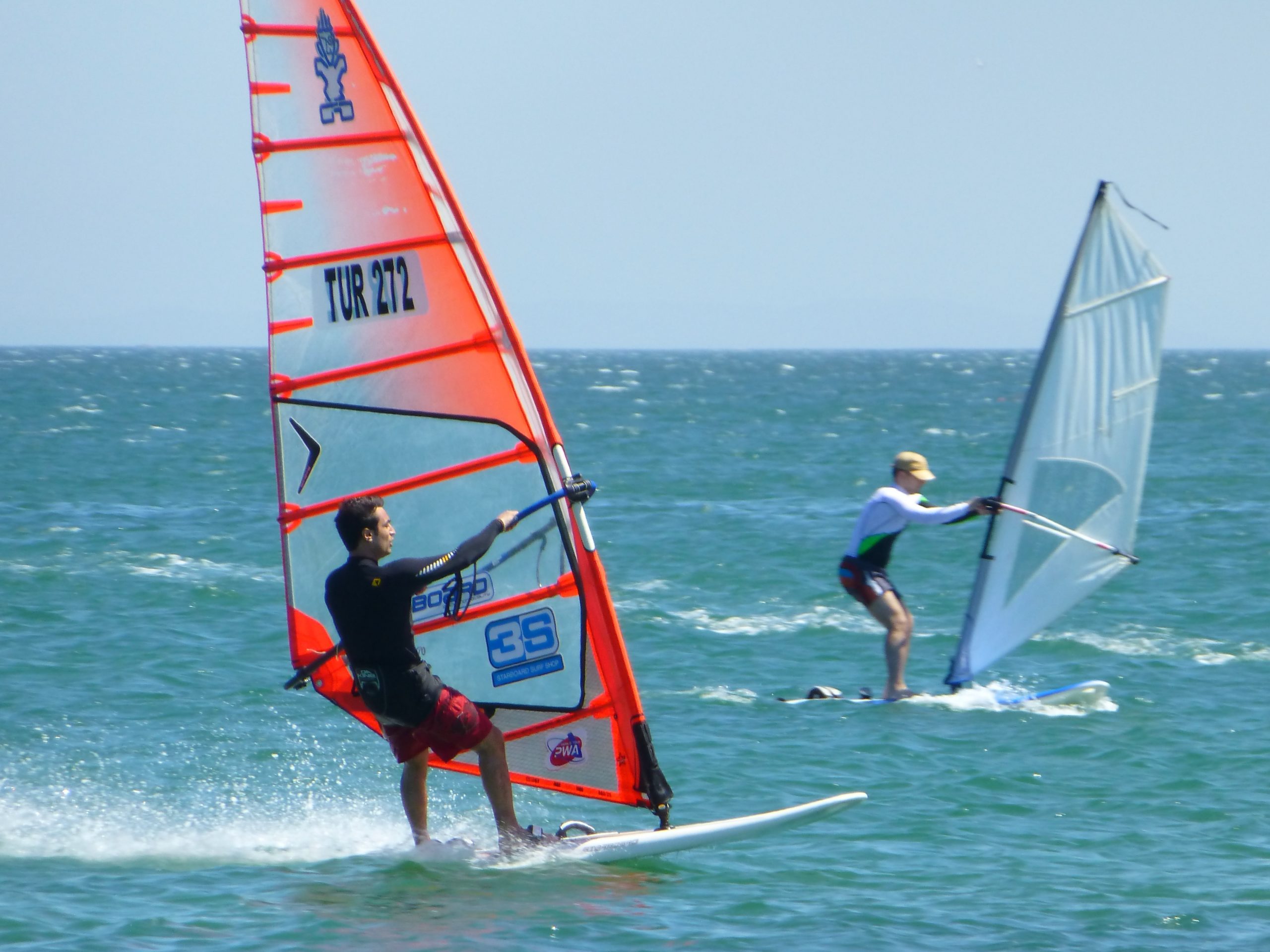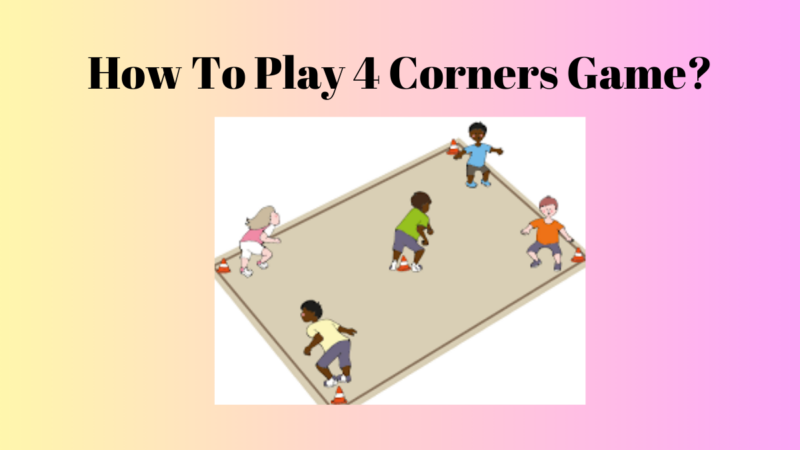How To Sail: The Ultimate Guide To Beginner’s Windsurfing

Windsurfing is an extreme and thrilling kind of water sports which people love to enjoy worldwide. It is a sport that is one of the favorite activities among beachgoers.
If you visit the beach often, then you must be knowing that windsurfing is a sport which people love and enjoy to have an adrenaline rush. It is a more popular sport among those who love something thrilling. The good thing about windsurfing is that although it is accounted for among the extreme sports, it is not that dangerous in comparison to others on the list, like bungee jumping.
However, before going for this thrilling and adrenaline-spiking water support, you need to know some basics about the game. In the article below, we have prepared a complete guide for windsurfing which will help you learn and know this sport well.
Choosing A Location
The first thing which you will be needing for the water sport of windsurfing is a suitable spot for it. When you are a beginner, then the location plays a vital role in boardsailing. You must look for places like a lagoon or lake, which is 100 to 200 yards across.
Other than this, you should also look for a place where the wind is flowing parallel to the shore. This will help you sail out and back to the shore once you are done or feel it’s enough. You should also avoid the place where there are powerboats as the waves generated due to them makes the balancing difficult.
You should remember that avoid windsurfing in the ocean in the initial times of learning the sports. This is important as the strong winds, and the waves are only for the experienced surfers, and they may disbalance inexperienced surfers.
Strength And Direction Of Wind
The wind strength and the direction play a vital role in the experience of windsurfing. The best-suited conditions are:
Wind Strength
When learning, you should avoid going windsurfing if the wind is stronger than seven to ten miles per hour. This matters as winds strong then this may make your learning or windsurfing experience frustrating.
The wind speed of three to five miles per hour is ideal for windsurfing. However, as you get better with time, you will become more confident and will be able to handle more wind. Once you have perfected the art of windsurfing, you will seek more and more string winds as they provide a thrilling ride. Although in the start, strong winds mean rebalancing as they will keep you pulling over.
Wind Direction
Like we mentioned above, the direction of the wind should be parallel to the shore. If the conditions are not suitable but you still want to go sailing, be careful. You should look out that the unparalleled winds don’t take you too away from the shore, or it may lead to problems in returning.
One more thing to know is that if the wind is blowing directly offshore, then you should avoid going for the windsurf. This is vital as such winds may take you far away from the shore, which might endanger you. One thing which you can do to avoid such things is to attach a tether line from the shore or an anchor. This will help you to get back to the shore by pulling yourself using the line. In general, a line of 30 to 50 yards is enough.
Tie this line to your mast base or the daggerboard handle or anywhere you feel it is ok on your windsurf board. However, be careful that the line doesn’t get entangled with the board or windsurf sail. At last, you must be familiar with your rig so that you are able to disassemble it while you are in the water. You should also be able to roll up the mast of the sail and place the rig among your legs over the board. Other than this, you should also be able to paddle back.
You should know that the large buildings or the trees may lead to the swirling of the wind around. This might make it difficult for you to sail or balance.
Practicing Windsurfing On Land
Before you go all out with your windsurf, sail into the water, assemble it completely, and try to experience the pull of the wind onshore. This will help you know the position and power of the wind, which you will need to know while in water.
Floor starting to place the base of mast on grass or the sand; now haul up windsurf sail. Now allow to blow or “luff” the downwind like a weathervane. While doing this, imagine the direction in which the wind would take you while noticing the direction in which the board is pointing. Now position the feet on the centerline of the windsurf board one on each side of the mast and then haul into the sail.
By doing this, you can have a perfect feel of what the pull will be on the sail without a need to face the problems like waves, balance, etc.
Practicing on the sand can give you an immersive feel of surfing on the water and can help you gain confidence and experience.
Preparing The Surface Of Windsurf Board
If you condition your windsurf board’s surface properly, it can offer a great level of traction. However, when the board is new, then the polyethylene deck of the board may be too slippery for traction. This is something which you should know about the windsurfing equipment as it will allow you to surf more comfortably.
The reduction of the slipperiness of the board is essential to provide traction during surfing. For it, the best thing you can do is scoop some sand from the beach and rub it on the surface of the board. Do this until the board’s surface no longer feels slippery. In case there is no sand available where you go for windsurfing, then you can also go scuffing the dock of the board using your bare feet.
When scuffing using your leg, one thing to remember is not to stand on the board while doing it. This is specifically in the case where the fin is connected to the board as weight might lead to breaking up of the fin or bending it. The deck of the board should also not feel like it’s too rough, and all you need is that it is not slippery. Your board’s traction improves the longer you use it, so the longer you use it, the better is traction.
Another thing to know is that don’t lay on the board while you have applied suntan or oil on your body. This is because it will lead to making the board more slippery when you stand. One more thing to know is that always clean the step hole of the mast before inserting the mast base.
Going Sailing
Rig and assemble the windsurfing board according to the manual, which comes with the windsurfing equipment kit. While assembling, make sure that there is no sand inside the step hole of the mast. Now insert the mast base into the hole and lock it at its place and walk the complete rig out in the water that is at least waist-deep. Now arrange the board in a way that it is pointing into the direction you wish to go for sailing.
Your back must be on the wind side, and the sail must be Latin into the water downwind side while the board is at an angle of 90 degrees. Now kneel over the board while keeping your legs on each side of the mast which is facing the sail, and now retrieve the uphaul line. Once you have done this, stand up while holding the line and keeping each foot on each side of the base of the mast.
Your legs must be on each side of the centerline and at least 12 inches apart from each other. The base of the mast must be in the middle of your legs.
Hauling The Sail Up
For hauling the sail up, lean slightly backwards towards the wind and pull the uphaul line. Keep the back straight while using the leg muscles for lifting the sail out from the water. The lifting of the sail will feel heavier at first, but as the lifting of the sail continues, the water on it will begin to run off. This will make the lifting up of the sail easier and easier as you go more and more for it.
Using a hand over the hand motion cm uhaul line and now pull the saul upwards. Do this until you are able to take hold of the handle of the sail, which is at the front of the sail’s boom. Pull till you see the back of the boom is out from the water, which will allow you to sail on a downwind blow like a weathervane.
Beginning The Sail
Reach the mast hand – one which is closest to the board’s nose – the one which is holding the handle of the boom and now grasp the boom. The boom must be 6 to 0 inches onto the back of the mast.
Move the hand to your shoulders width on the backwards side and grasp the boom – this hand is known as the “sheet hand.” Pull the mast by using your sheet hand slightly in a way that it is leaning towards the board’s nose. Now slide your back foot 12 inches more backward. All of this must be done quickly in a single smooth move for proper sailing. One more thing to know is that dont sail in a straight line.
At this point, one problem which most of the beginners face is that they fall over backward. The reason for this is that the mast is not properly leaned far as needed towards the board’s nose, and thus, the board turns to the wind. In cases where you start to turn far from the wind, all you need to do is learn a little backward. This will help in resuming the straight course.
Once you start sailing, remember not to pull the sail much far as it will make you sail sideways. So if you begin sailing sideways, then loosen up a little on the sail. The wind should be released on the rear side of the saul for it to move in the straight and forward direction.
Wind Gust
In case a gust of wind starts to pull off the balance, all you need to do is sheet out the wind using the rear hand, and it will help you maintain the balance. Once you recover from the pull of the gust, pull back the sheet hand and again resume on the course. In case you have been pulled forward far away, then don’t let go off the mast hand. Always remember to let go first with your sheet hand. Once you release the sheet hand, the sail will also stop trying to pull over.
This is why it is essential to let go of the sheet hand first as if you let go of the mast hand first; then the sail will pull you continuously. In this case, you will need to drop the sail into the water and once again will need to begin from scratch.
Steering
Steering or turning the board is easy, and you can accomplish it by simply leaning the mart over the centerline of the board towards its nose. It will help you to turn away from the wind or to the side of the tail to turn in the wind.
For steering the board in the windsurfing, the movement of the center of the effort is what plays a role. It is the reason why the board steers in the direction you want it to.
Position Of Body For Proper Sailing
When beginning, always try to keep the front arm in bent preposition at the point of the elbow all the time. Adjust the sail’s pull by letting in or letting out the sheet hand(rear).
You also need to keep your shoulders backward and the back in a straight line – never bend at the waist area and always let the rear of your body hang out. Keep the boom of the sail fairly close to the chest so that mast stays over the centerline of the board. Don’t lean it far from yourself. In legs, you need to keep the front leg fairly straight while pointing it towards the board’s front. By doing this, you transfer the force of sail to drive the board.
The other leg, which is the rear leg, should be bent slightly as it will help you to adjust the balance. During the strong winds, you will need to move the feet out closer to the rail of the windward and lean backward to counter the increased pull of the sail.
Coming Out Or Tacking
It is nearly impossible to directly sail in the wind, so you need to travel upwind, and you must sail over a series of close-hauled tacks. You need to do it by making a zig-zag type course till you reach the destination.
Coming about refers to turning towards the new upwind tack through bringing the windsurf board nose across the wind. For coming out when you sail close-hauled, you need to first lean mast back ways till the heads up of board in the wind. At the same time, doing this, drop the boom’s back end into the water. It will help you to slow down and pivot the board. While doing this, allow the sail for luffing and hold on to the uphaul line or the handle of the boom.
When the board heads up, step around towards the mast’s front and do this by making small steps. In doing this, you also need to stay close to the base of the mast. Now lean mast towards the board’s side to which you want to turn the windsurf board. When you do it, the nose of the windsurf board will come in the direction you want. This turning of the board is known as the “Rope Turn.”
When the board comes to the direction you want, keep your back towards the wind and continue to step around the base of the mast.
Jibing
When you sail downwind on board, reach and want to turn the coming wind from the other side; all you need to do is lean the mast to the side of your nose. This will begin the sail straight downwind.
When the board comes around, you need to move the feet till you stand with one foot on each side of the daggerboard well on the board’s center. Now release the sheet hand from the boom and keep holding on to the uphaul line. Let the sails go around to the nose of the board so that you can grab boom with the other hand over the opposite side, and this will help you in jibing.
Running
From the board, reach start sailing downwind. For it, you need to tilt the mast to the board’s nose. When it begins to head downwind, you need to step around, so your both feet are placed equally over the opposite sides of the daggerboard; well, it is facing forward.
Now bring sail around in a way that it is approximately perpendicular to board with mast leaning to ski windward side. Look using the sail window and now steer the board, and you can do it by leaning boom and the mast to the right or left instead of back or forward. The board will turn in the opposite direction of the leaning. It means the board will turn left if you lean right and vice-versa.
Final Words
The sport of windsurfing is popular among people who want to experience something adrenaline spiking and thrilling.
This sport lets you ride the wind and waves using a windsurf board, and the activity is extremely fun to do. However, for doing this, you need to know some of the basics of windsurfing as balancing, and the movement of the board; all need knowledge. This is essential as, without it, you will not be able to windsurf, and the bard will overturn easily.






